For the first time, the northern and district salary increases began to accrue back in the 70s of the last century. So the government of the Soviet Union tried to stimulate young people, specialists to work in extremely difficult conditions. Now there is a tradition to pay extra for labor in the North, but the ratio of salary and percent of the premium has changed significantly. Let us consider in more detail what a district coefficient is and how to work with it.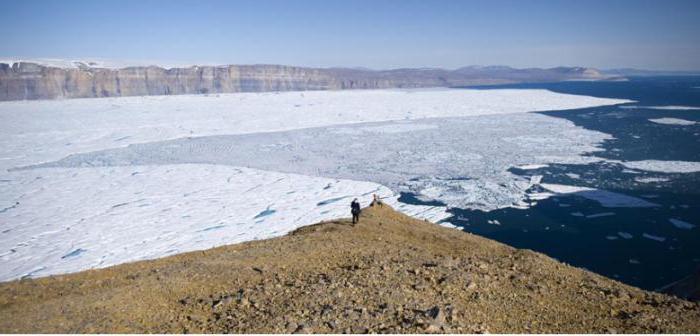
Legislation
In fact, today there is no single regulatory document that would combine all the instructions, provisions and guidelines on the supplement to workers in the far north and equivalent regions. In order to correctly calculate this or that percentage and know when and to whom it can be done, you need to turn to several legislative acts. In the process of analyzing all issues related to the northern and district coefficients, we will refer to one or another government document.
Articles 129 and 316 of the Labor Code of the Russian Federation state that persons working under certain conditions who are not equated with normal conditions should receive compensation. One of these forms is the district coefficient. Again, how much and what percentage to pay is often unclear. Accountants in this regard are guided by legislative acts adopted back in the days of the Soviet Union.
What is the difference between northern and regional allowances
The northern allowance is a certain amount, which is calculated as a percentage of wages and relies to workers in the Far North. These areas are clearly established, and there are also special territories that are equated with them. The premium itself is calculated individually for each employee and largely depends on the experience and time spent in the North.
The district coefficient is also charged to those who live in the North, but, in addition, it also relies to those who work in an unfavorable climate zone. These are regions close to the North, alpine cities and villages, desert territories and more. Also, an additional allowance is paid to workers in the area exposed to radiation exposure. This coefficient is not individual, its value is clearly regulated by normative acts, and it is common to everyone within a given locality.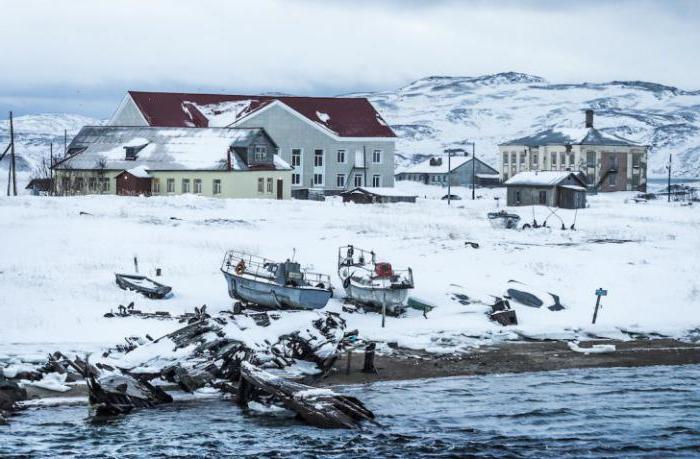
Accrual procedure
First of all, it should be noted that the calculation of the district coefficient is carried out by an employee who works in an unfavorable area, regardless of where the employer's actual location is. If the main office has a legal address in Moscow, and the unit is located in Cherepovets, then everyone who is registered in Cherepovets is entitled to a surcharge. In the case when the service is in a certain period of time, the coefficient is calculated in proportion to the salary for this period.
In addition, one more important nuance must be taken into account. The district coefficient (calculation in accounting) should be calculated only after all bonuses for rank, continuous work experience, position, length of service, for night and after school hours, combination have been added to the main salary.
This should not be taken into account: the northern allowance, all types of payments for average earnings (for example, vacation pay), material compensation or one-time bonuses.
Categories of climatic conditions
The regional coefficient for wages is calculated primarily depending on the place of work. In total, four categories of climatic conditions are distinguished in Russia.
The first group includes all villages and stations of the Far North with particularly difficult living and working conditions. At the moment, the largest coefficient in the amount of double wages is laid on polar explorers on the islands of the Arctic Ocean and its seas, plus the Kuril and Commander Islands.
The second group includes the remaining regions of the Far North, the list of which is quite large.
The third group is an area that is only equated in the North.
And the fourth group includes territories of difficult climatic conditions or with other indicators that are harmful to health.
Next, we consider the regional coefficient by region.
Northern regions with the highest coefficient
The largest district coefficient among all regions of the Far North is the city of Murmansk. This value is 1.8, which in practice means an increase in salary of 80%. A little less in the village of Tumanny - 1.7. In the rest of the region, a value of 1.4 remains.
The next region with a high rate is Vorkuta and the adjacent territories. Here they pay 60% of the salary. Slightly less in Inta - 1.5. In the rest of the Komi Republic, the district coefficient varies from 1.3 to 1.2, including in the capital, the city of Syktyvkar.
Arkhangelsk region - 1.2, with the exception of Arkhangelsk itself, here - 1.4.
The republic of Karelia also belongs to the northern region. Belomorsky, Kalevalsky, Kemsky, Loukhsky districts have a coefficient of 1.4. Some others - 1.3, the city of Petrozavodsk and adjacent territories - 1.15. 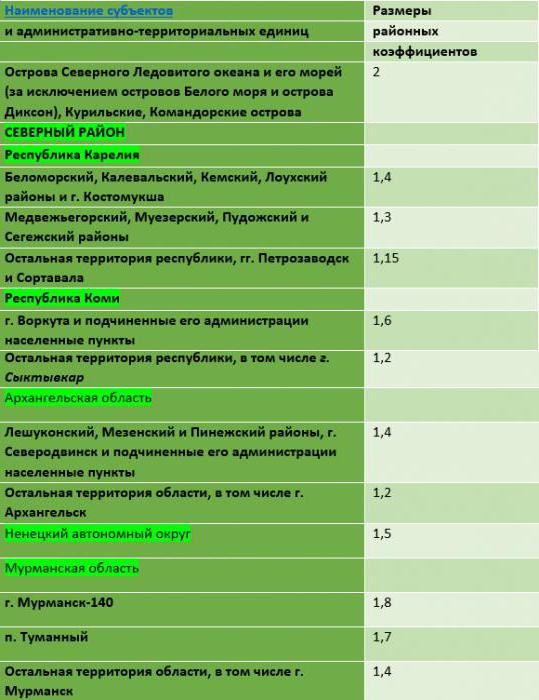
Territories Equated to Northern
In the Appendix to the Decree of the State Committee for Labor of the USSR and the Presidium of the All-Union Central Council of Trade Unions of November 20, 1967 No. 512 / P-28 indicates that territories equal to the north are considered to be the territories: Khabarovsk, Primorsky, Chita and Amur regions, Buryatia. The most interesting thing is that the norms adopted 50 years ago are still valid. Residents of these regions have higher wages. The regional coefficient is 1.2.
The same category includes the territory of the Altai Territory and the Altai Mountains. For residents of the hill, the coefficient is quite high - 1.4. Plain territories have only 1.25. It was decided to equate this area with the northern one in 1994 by a decree of the Government of the Russian Federation of July 18, 1994. Number 856. 
Terrain with severe climatic conditions
The fourth category with district allowances since 1992 includes: Khakassia, the entire Vologda Oblast, Cherepovets. Values correspond to: 1.3; 1.15; 1.25.
In 1987, the regions of the Urals were recognized as regions with difficult climatic conditions: Yekaterinburg, Perm, and some areas that are part of these and other regions. The coefficient here is low - 1.2. In addition, a 15% bonus is received by residents of the cities of Kurgan, Perm, Orenburg, as well as employees of the Chelyabinsk region, the Republic of Bashkortostan and Udmurtia. 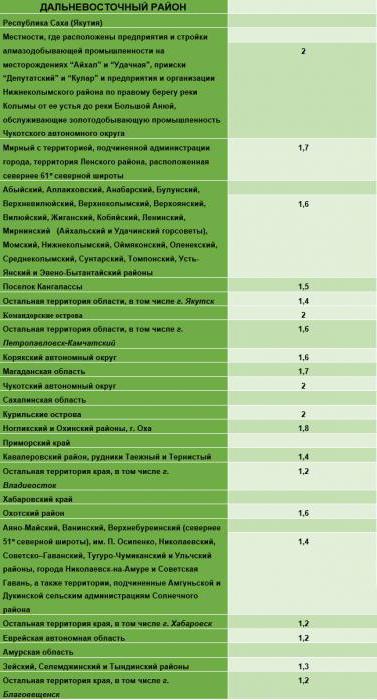
Accrual of the Northern youth allowance up to 30 years
The northern and district coefficient is automatically calculated in full amount for those who were born and lived all the time in a privileged territory. But for those who have come here recently, there are other rules. There are a lot of subtleties in this issue that you should understand.
The first nuance. It used to be so. If a person lived his whole life in the North, studied and went to work, then he will immediately be paid a 100% allowance. This law was in force until 2005. Now you need to turn to the letter of the Ministry of Health of Russia No. 697-13 of 08/17/2005, which explains article 11 of Law No. 4520-1. Attention! Now a decree is valid. In the event that an employee under the age of 30 years is employed, and he lived on the territory of the RCC for more than 5 years before January 1, 2005, he shall be entitled to a full allowance.
For example, an employee was born in Vorkuta in 1990. At the time he was hired in 2010, he was 20 years old. He did not leave his hometown. He lived until January 1, 2005 for 15 years, which means that the district coefficient for wages will be paid in full.
Accrual of bonus in case the employee has not lived 5 years in the RCS before 2005
Let's consider another option. Suppose an employee has lived in the CSW for less than 5 years, but more than 1 year. For example, his birth year was 1997, and he spent the first 5 years of his life somewhere in Krasnoyarsk, and then his family moved to the North. Until 2005, he lived in the CSW for only 3 years. In 2016, hired. In this case, an increase in its northern allowance will be made in accelerated mode:
- After the first half of the year, salary will increase by 20%.
- Then, for every six months worked, it is supposed to rely on 20% until the value reaches the border of 60%.
- If in the locality the northern allowance is higher than the coefficient of 1.6, then 20% is added for each worked year until the maximum is reached.
- If this is not the territory of the Far North, but only the territory equated to it, the values will increase proportionally by 10%.
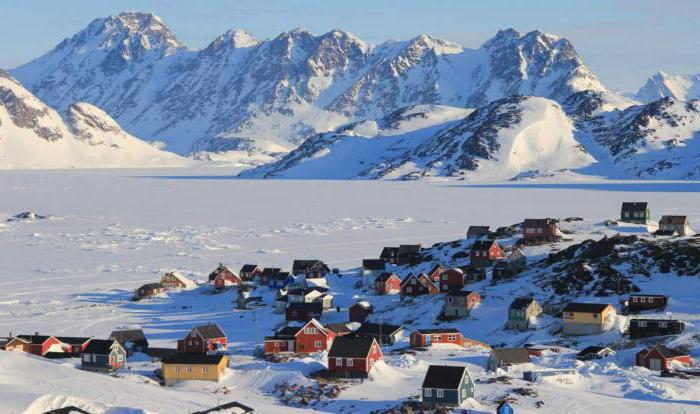
Accrual of the northern allowance to those who have just arrived in the region of the Constitutional Court and started working there
In order to correctly calculate the northern allowance for a newly arrived employee, it is worth contacting article 317 Labor Code and Regulation 11 of Law No. 4520-1, which was last edited by federal law No. 122-FZ of 08.22.2004. These documents provide clear recommendations on the amount and conditions for calculating premiums.
According to this, an employee who has lived in the Far North region or equivalent territory for at least 12 months and at the same time has worked officially for six months is entitled to a first bonus of 10%. Further, the size of wages will increase by another 10% with the expiration of the second half of the year. Over the year, its size will increase by 20%. If the employee continues to work in the same place, every six months he is entitled to a bonus of 10% to the maximum allowable limit in this region.
Afterword
In practice, all accountants and financiers are guided by the oldest instruction adopted back in the USSR. Many of its provisions have long lost their legal significance. And the Supreme Court of Russia can cancel this or that rule only after the appeal of citizens. In view of the passivity of our fellow citizens, these articles remain on paper, that is, formally valid. Only a few are able to pursue and assert their rights.
According to Art. 313 of the Labor Code, any employer is able to take their own initiative to reward their employees for working in adverse conditions. In addition, the same conditions are allowed for local governments. If the regional government or entrepreneur decides to pay additional guarantees or compensation, the law will not contradict this.








